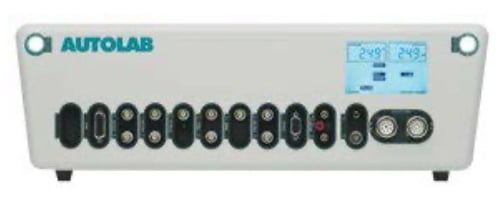Corrosion Parameters by Electrochemical Impedance Measurements (EIS)
The ASTM G106-89 procedure explains the use of electrochemical impedance spectroscopy (EIS), a powerful technique for the characterization of corrosion inhibitors and films. Rather than a typical DC-based current vs voltage study, this technique applies a simultaneous AC signal to the solid sample and measures the response in terms of real and imaginary impedance. The data is then analyzed via complex fit and simulation programs to yield film resistance, reaction kinetics, polarization resistance and various other kinetic parameters governing the corrosion process and reaction mechanism. The technique is advantageous in the development of corrosion inhibitors and anti-corrosive films.
Metrohm Autolab users perform EIS measurements with the FRA32M module in potentiostatic and galvanostatic control, over a wide frequency range of 10 μHz to 1 MHz. We provide dedicated set-ups for EIS measurements according to ASTM G106-89 on single and multiple cells. For EIS analysis in concrete, a customized instrument with a compliance voltage as high as 100V is available.
Application: Corrosion inhibitor testing and redox kinetics analysis at corrosion research & testing labs
Application Note:
- Electrochemical Impedance Spectroscopy of Three Coated Aluminum Samples (Download)
- Equivalent Circuit Models (Download)
Recommended Configuration: Multichannel Impedance Analyzer


Unique Software Features for EIS Analysis

Fully automated, real time EIS analysis and plot generation for:
- Equivalent circuits fitting and simulation
- 3D plotting for Nyquist & Bode plots
- Lissajous plots
- 5 Pre-defined EIS protocols
- Multiple EIS with single click
- Multi sine technique for quick low frequency measurements
- Potential scan, current scan, time scan
- External transfer function analysis
